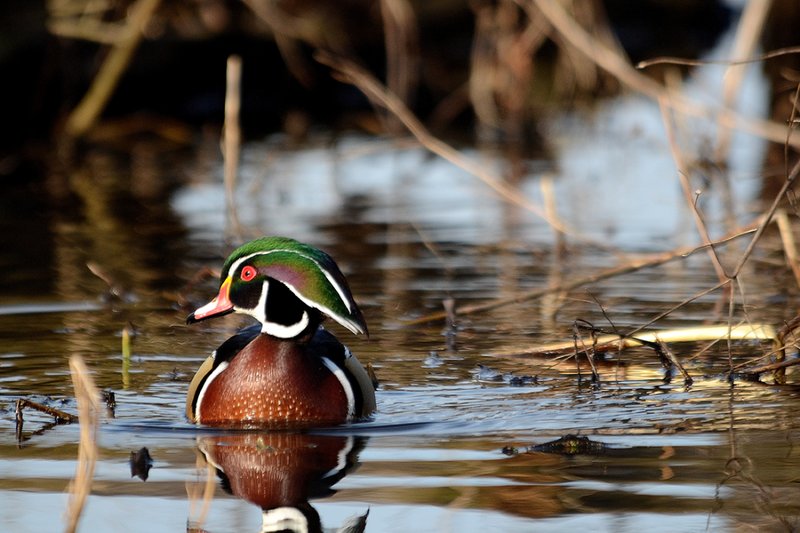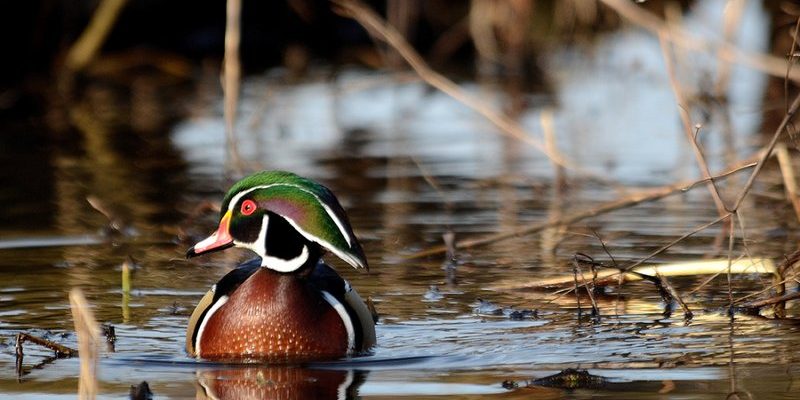
Imagine a world where these colorful ducks no longer float gracefully on tranquil waters or nest in the low branches of trees. That world is becoming a reality without intervention. Thankfully, people are rallying to save the wood duck—not only for its beauty but also for the critical role it plays in our ecosystems. Let’s dive into the conservation efforts aimed at protecting the wood duck and see what we can do to help.
Understanding the Wood Duck
To appreciate conservation efforts, it’s crucial to understand what makes the wood duck unique. These birds are native to North America and can be found near freshwater habitats like ponds, marshes, and streams. With their striking iridescent feathers and distinctive facial markings, they stand out in any setting. The males, in particular, are known for their vibrant colors, while females are more muted but still lovely with their subtle patterns and white eye rings.
Beyond their beauty, wood ducks play an essential role in the environment. They help control vegetation by feeding on a variety of plants and seeds. This, in turn, supports the health of their aquatic habitats. However, habitat loss, hunting, and climate change have severely impacted their populations. Understanding their importance is the first step in realizing why conservation efforts are crucial.
The Decline of the Wood Duck Population
The wood duck population has faced a steep decline over the last century due to habitat destruction and hunting. Wetland areas have vanished or been altered, making it difficult for these birds to find suitable nesting sites. You might be wondering how significant this decline is. In the early 1900s, the wood duck was nearly hunted to extinction, with numbers dwindling to just a few thousand. Fortunately, protective measures and habitat restoration began, which led to a gradual rebound.
However, despite these efforts, certain challenges remain. For instance, climate change is altering wetland landscapes. Rising temperatures and unpredictable weather patterns can disrupt breeding cycles and food sources. The continued loss of habitat and increasing pollution levels pose even more threats. As much as we admire these birds, we must acknowledge the realities they face to create effective conservation strategies.
Habitat Restoration Initiatives
One of the most impactful conservation efforts for the wood duck is habitat restoration. This process involves revitalizing wetlands and forested areas to create suitable environments for the birds. Organizations and volunteers often work together to restore these habitats by removing invasive plant species, planting native vegetation, and preserving existing wetlands.
Creating nesting boxes is another effective strategy. Wood ducks usually nest in tree cavities, and as deforestation has increased, natural nesting sites have become scarce. By installing nesting boxes in areas where wood ducks are known to breed, conservationists can provide them safe places to lay their eggs. These efforts are not just about making room for the wood ducks; they play a vital role in maintaining the overall health of our ecosystems.
Community Engagement and Education
Community involvement is crucial for any successful conservation effort, and protecting the wood duck is no exception. Local organizations often lead educational programs to raise awareness about these birds and the challenges they face. You might find workshops, guided birdwatching tours, or even school programs that teach kids about wood ducks and their habitats.
Engaging the community creates a sense of ownership and responsibility. When people understand why wood ducks matter and how to assist in their conservation, they’re more likely to get involved. Whether through volunteering for habitat restoration projects or simply spreading the word, community members can make a significant difference.
Legal Protections and Regulations
Legal protections play a critical role in ensuring the survival of wood ducks. In the United States, the Migratory Bird Treaty Act protects these birds and their nests from hunting and disturbance. This legislation has been instrumental in the recovery of many waterfowl species, including the wood duck. It makes illegal any hunting outside designated seasons or without proper licenses.
Additionally, various states have implemented regulations to ensure sustainable hunting practices. For instance, limits on hunting licenses and season dates help manage wood duck populations while allowing for responsible hunting. These legal safeguards help balance the interests of hunters with the need for wildlife conservation.
The Importance of Research and Monitoring
Research is at the heart of effective conservation efforts. Scientists and wildlife biologists study wood duck populations to understand their behaviors, breeding patterns, and habitat needs. This information is crucial for developing strategies that benefit the species and the ecosystems they inhabit.
Monitoring programs also track population trends and the impact of conservation measures over time. By gathering this data, conservationists can adjust their strategies and focus efforts where they’re needed most. For example, if certain nesting sites show a decline in success, they can pivot to improve those locations specifically. Research might be a behind-the-scenes effort, but it’s essential for the birds’ ongoing survival.
What You Can Do to Help
You might be wondering how you can get involved in protecting wood ducks. Here are some simple ways to contribute to conservation efforts:
- Volunteer: Join local conservation groups working on habitat restoration projects or educational programs.
- Educate: Share what you’ve learned about wood ducks with friends and family. The more people know, the more we can work together for their protection.
- Support Conservation Organizations: Consider donating to or becoming a member of organizations dedicated to wildlife conservation.
- Be an Advocate: Advocate for policies that protect wetlands and natural habitats. Every little bit helps!
Each of these actions, no matter how small, contributes to the larger effort of conserving the wood duck and its habitat.
In conclusion, the wood duck is a stunning bird worth protecting, and conservation efforts are making a difference. By restoring habitats, engaging communities, enforcing legal protections, conducting research, and encouraging public involvement, we can secure a future for these beautiful creatures. You can play a part in ensuring that future, helping to keep the wood duck paddling gracefully in our wetlands for generations to come.

